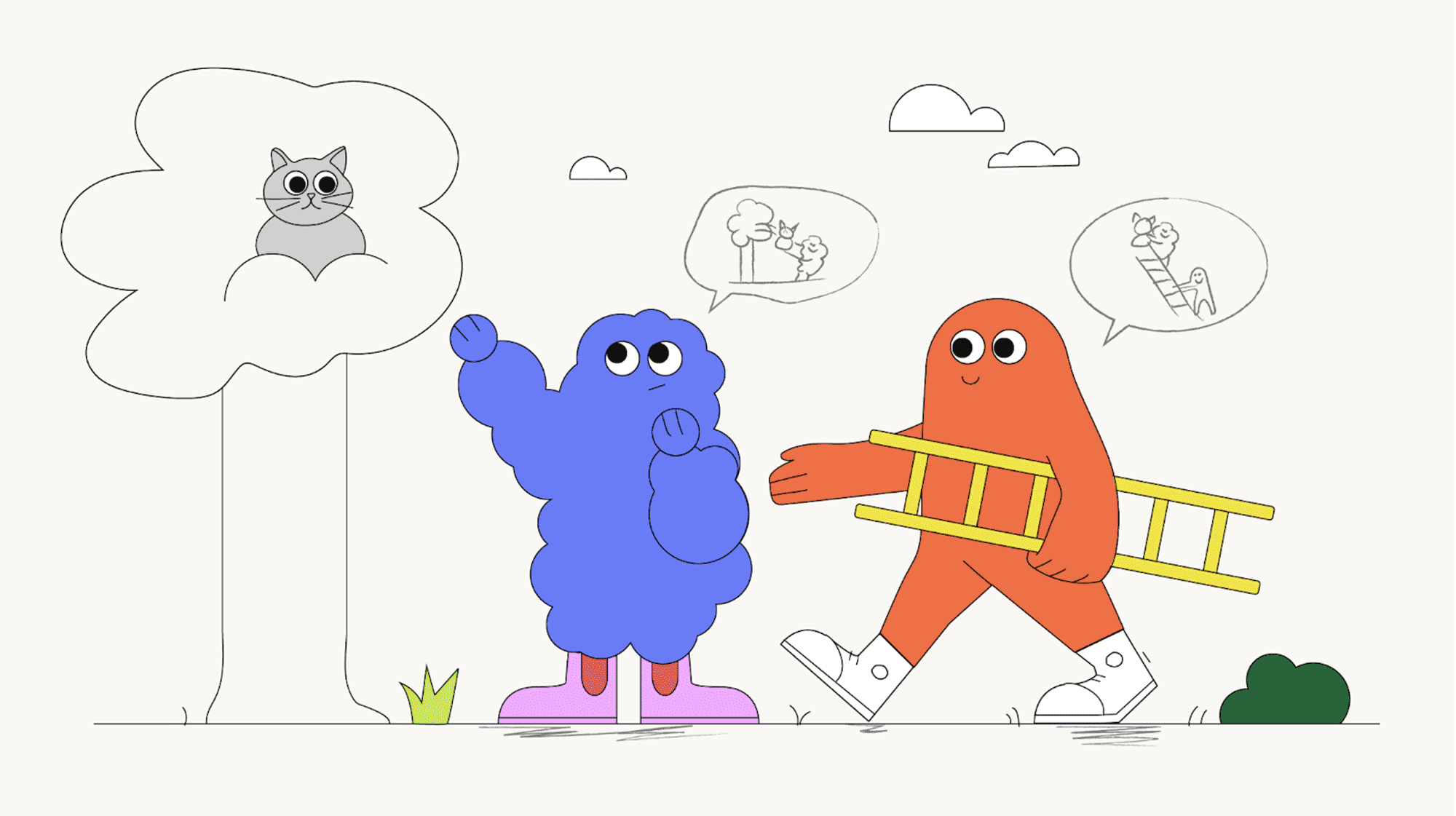If you've ever been on an extensive research project, congrats! But also, condolences. There's immense value in Design Research, but working on a lengthy research project as a designer can feel like being on a spaceship drifting ever farther from the Earth with no fuel in sight. If you’re a client, maybe you’ve been on the other side of this wait. If, after all that time, the designs don’t quite hit the mark, that can be disappointing. Ouch. No matter where you stand, the tension between design and research is as palpable as any design critique you’ve had by that one professor you had in school… you know the one.

But what if I told you there’s value in cracking the metaphorical “design” egg into the “design research” mixing bowl? Here are four reasons why this recipe is worth a try.
*Before I dive in, I should specify that when I refer to ‘design’, I mean digital product, experience, and service design. *
1. It's like spelunking with lasers. Design is a tool that shines new light on old problems.
What is design research? Well, it's like trying to navigate through a dark room without a flashlight - there's something you don't know, usually about your audience, that you want to find out. To illuminate these unknowns, we typically use generative and qualitative research. What we don’t typically use, however, is design.
But what if we brought design to the party? What if we partnered design with research to help us identify more opportunities, sooner? For instance, I’m learning that when you pair design with qualitative user interviews, you create new pathways – “yes, and…” moments that often reveal new contexts and potential value. When we put a tangible design in front of users or client stakeholders as part of our research process, their reactions often spark unexpected and exciting conversations.
2. It’s like the multiverse. By occupying the research and design worlds simultaneously, we save time.
As someone who has spent most of my career in the strategic-design-human-centric-design-thinking-insert-more-jargon-here world, I've learned just how valuable it is to do research with real people. But let's face it: research is resource-intensive, time-consuming, and costly. It takes precious time to define objectives, select methods, define recruitment criteria, prep, schedule, conduct, synthesize, and so on. On one hand, this time spent allows designers to gain a deep understanding of the problem space, which helps our designs hit the mark. On the other hand, a shorter research phase allows designers to start designing sooner, but without that comprehensive understanding of user needs.
To balance the factors of “time spent” and “knowledge gained,” we can approach research and design as two sides of the same coin. One doesn’t necessarily need to follow the other; instead, you can do research and design together. This approach isn’t useful in all contexts. However, it comes in handy in situations where you're not quite sure what you're making yet. By designing alongside research, you not only save time, but also reveal valuable insights that guide your future direction. It might even foster a more collaborative spirit for your design and research teams. You’re traversing the multiverse of research and design to emerge at the end, wiser and more experienced.
3. It's like the pandemic sourdough experimentation craze. Sometimes you have to design to understand instead of designing to solve.
The traditional process for figuring out what to design usually follows the same old drill: discovery, research, concepting, definition, and then design. Design is usually seen as a means to solving problems, so it often comes last. Eek, that’s a lot of time and potential risk incurred.
Instead, in an over-simplified way, we start with Immersion - to understand the current state and plan the research, Design as Research where we marry qualitative research with iterative design sprints, and then end with a Definition phase where we consolidate our learnings into a POV. Our process is a DJ mashup of a few existing great tunes aka design frameworks, including user-centric research from the Design Thinking, hypothesis-driven experiments from Lean Startup, and iterative design sprints from Google Venture's Design Sprint. The key difference from traditional processes, and the heart of our approach, is that we reimagine design as research stimuli and a means to understand the problem, not just as a means to solve it. By approaching design this way, we can gain valuable insights early on in the process, mitigating risks as early as possible, leading to better-informed decisions and more impactful designs.
4. It’s like we’re scientists. If we have hypotheses to test, we can discover the right value.
Let’s say you’ve gotten to the design phase, there’s a whole bunch of research, insights, and frameworks to build from, and you’re ready to sketch and design. Sounds like smooth sailing right? Well, not always. A blank canvas can be intimidating, you might be crunched for time, or maybe there’s no testing involved prior to delivering a project. All this puts a lot of pressure on designers to get it right immediately.
But if you’re doing design and research together, is it really that different? And what do you design to make it worth it? Often, we focus on the things that have the potential to create the most value, but are shrouded in the biggest assumptions, a.k.a the riskiest stuff. We call these our conceptual design hypotheses, and they're like first dates: sometimes they're a hit, sometimes they're a miss, but they teach us something. The important distinction we make is that our design explorations are purely stimuli for testing. They’re there to get answers to hypotheses and they help us isolate what we are trying to learn. A hypothesis can be concrete, or more abstract like questions around positioning, ways of interacting, or level of engagement. You might be asking yourself, isn’t this just evaluative research done sooner? Not really. Evaluative research like user testing, or usability testing, is done to evaluate how well a design performs. What we try to do instead is explore the biggest unknowns and gain insight.
Like all healthy strands of hair, this too, must come to an end
It's a false dichotomy to think that research and design have to be separate, and that designers must choose between being a thinker or a maker, a researcher or a designer. By bringing design into the research phase, designers can be both. This approach is not meant to replace existing research methods, but rather to serve as an alternative approach. As designers, we should always be learning and unlearning, and celebrating our failures as opportunities for us to get better.
